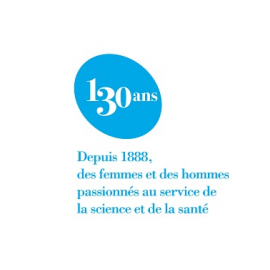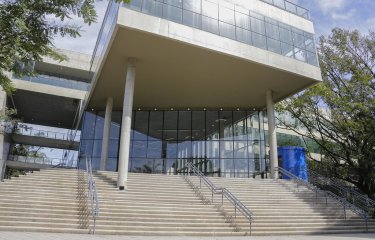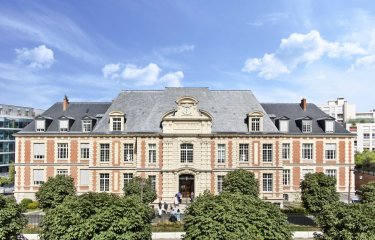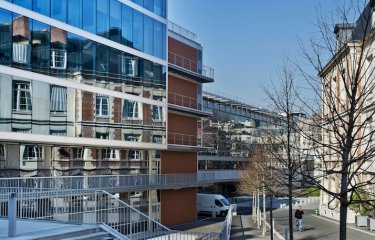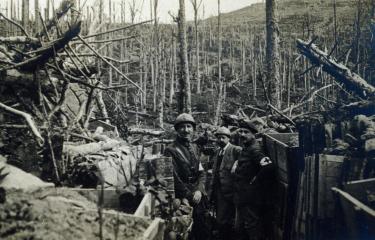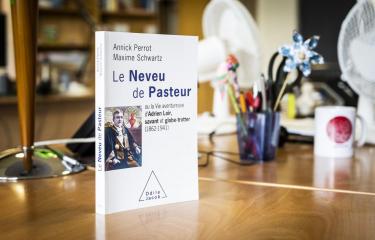On June 4, 1887, the Institut Pasteur was created following the success of the rabies vaccine developed by Louis Pasteur – and thanks to the generous support of countless donors. Just set up as an institution with official charitable status, the building work began straight away.
"This is the start of post-exposure rabies prophylaxis. (...) A rabies vaccine center should be set up," declared Louis Pasteur on March 1, 1886 at the French Academy of Sciences, after revealing the results of the first human vaccinations against rabies. The Academy immediately appointed a committee, which took the unanimous decision to launch an international appeal for funds to set up this center, which would be "known as the Institut Pasteur". The scope of the plan soon grew: the new center would be "a dispensary for rabies treatment, a center for research into infectious diseases and a center for education" – as laid down by the Institut Pasteur's articles of association, which were approved by order of the Council of State on June 4, 1887.
The first challenge was choosing and purchasing a suitable plot of land for the new institute. Pasteur originally thought of asking for help from Paris City Council. "Scientists are coming from all over the world to learn about the process of virus attenuation. They need to be given a level of hospitality worthy of Paris and of French science," said the President of the City Council in April 1886. But the discussions were heated, and some Council members, detractors of Pasteur's methods, opposed the plan. In late May 1886, a plot already used by Pasteur in rue Vauquelin, plus an additional 2,500m2, were finally offered. After careful consideration, Pasteur turned down the offer. "Every laboratory-based scientist would prefer a more modest but independent facility for the new institute," he wrote in January 1887 to the Vice-President of Paris City Council.
In March 1887, as the international appeal neared two million gold francs, an 11,000m2 plot was purchased for 420,000 francs in rue Dutot*, in the "Vaugirard district on the outskirts of Paris". The architect, Petit, had already been working for some months on plans for the future institute. He launched the building works in June.

Plan of the second floor of the Historical Building of the Institut Pasteur built by architect Petit in 1887. © Institut Pasteur - Musée Pasteur
Ashlar, millstones and bricks were used to construct two large parallel buildings joined by a central corridor, with a Louis XIII-style façade. On October 1, work on the roof was already "well under way", but the architect died soon afterwards and his second-in-command, Brébant, took over. On December 29, Pasteur wrote: "The roof now covers the entire building. It looks most impressive."
After a few months' work on the interior, the Institut Pasteur was officially opened by French President Sadi Carnot on November 14, 1888. This "historical" building was the only one that Louis Pasteur ever saw. He lived there until his death seven years later, on September 28, 1895, and his tomb is still housed there in a specially built crypt.
* Now rue du Docteur Roux, in the 15th arrondissement of Paris.
A short history of the creation of the Institut Pasteur
In July 1885, nine-year-old Joseph Meister, who had been bitten by a rabid dog, was the first to be treated by Louis Pasteur's vaccination. He was followed in October by the shepherd Jean-Baptiste Jupille. Word about these early successes soon spread like wildfire, and people from all over the world who had been bitten by rabid animals flocked to Pasteur's laboratory at the École normale supérieure in Paris.
A first spontaneous donation kindled an idea in the scientist that he shared with the philanthropist* in January 1886: "It is my intention (...) to build a model establishment in Paris without having to ask for state funding, with the aid of donations and international funds." On March 1, 1886, he presented his results to the French Academy of Sciences: of the 350 people he had treated, only one had not been cured. "This is the start of post-exposure rabies prophylaxis," he concluded. "A rabies vaccine center should be set up." The Academy immediately appointed a committee, which took the unanimous decision to set up this center – to be "known as the Institut Pasteur" – and to launch an international appeal for funds. Men and women of every social class, from all over the world, donated to the cause. The Official Journal published lists in which donations by the world's most wealthy – the Tsar of Russia, Madame Boucicaut (see below), the Emperor of Brazil and the Sultan of Turkey – featured alongside those made by people with more modest incomes: "Monsieur Lahorgne, policeman, gives 1 fr., Monsieur Pastel, postman, gives 0.50 fr." Pasteur became his own sponsor, donating the proceeds from sales of his veterinary vaccines**. He drew up the articles of association for the future institute, which would be "a dispensary for rabies treatment, a center for research into infectious diseases and a center for education". The articles were approved by order of the Council of State on June 4, 1887, thereby setting up the Institut Pasteur as an institution with official charitable status. At the opening in November 1888, Pasteur declared: "And here we see it finished, this grand building of which it may be truly said that there is not a single stone that is not the sign of a generous thought. All the virtues have paid tribute towards the erection of this abode of toil."
* The Count of Laubespin (1810-1896)
** Vaccines for anthrax, fowl cholera and swine erysipelas
The creation of the Institut Pasteur in a few dates
- July 6, 1885 - The young Joseph Meister receives the first rabies inoculation in Louis Pasteur's laboratory at the École normale supérieure.
- March 1, 1886 - Pasteur presents the successful results of his method, used to treat 350 rabies victims, at the French Academy of Sciences, which appoints a committee to develop plans for a vaccine center.
- March 8, 1886 - The committee appointed by the Academy of Sciences unanimously adopts plans to set up a center for post-exposure rabies treatment and launch a public appeal for funds.
- March 14, 1886 - The appeal is launched in France and abroad.
- April 1886 - The appeal reaches 500,000 francs.
- May 11, 1886 - A gala for the Institut Pasteur is held in the Trocadéro under the patronage of several artists including Alexandre Dumas, Charles Gounod and Camille Saint-Saëns.
- November 5, 1886 - The total reaches 1,712,691 gold francs.
- March 19, 1887 - The patronage committee purchases a 11,000m2 plot in the Vaugirard district in Paris for 420,000 francs.
- June 4, 1887 - An order signed by French President Jules Grévy approves the Institut Pasteur's articles of association and gives it official charitable status.
- June 13, 1887 - Funds raised by the appeal exceed 2 million francs. Building work on the Institut Pasteur begins.
- January 1888 - The appeal reaches a total of more than 2.5 million gold francs.
- November 14, 1888 - The Institut Pasteur is officially opened by French President Sadi Carnot.
